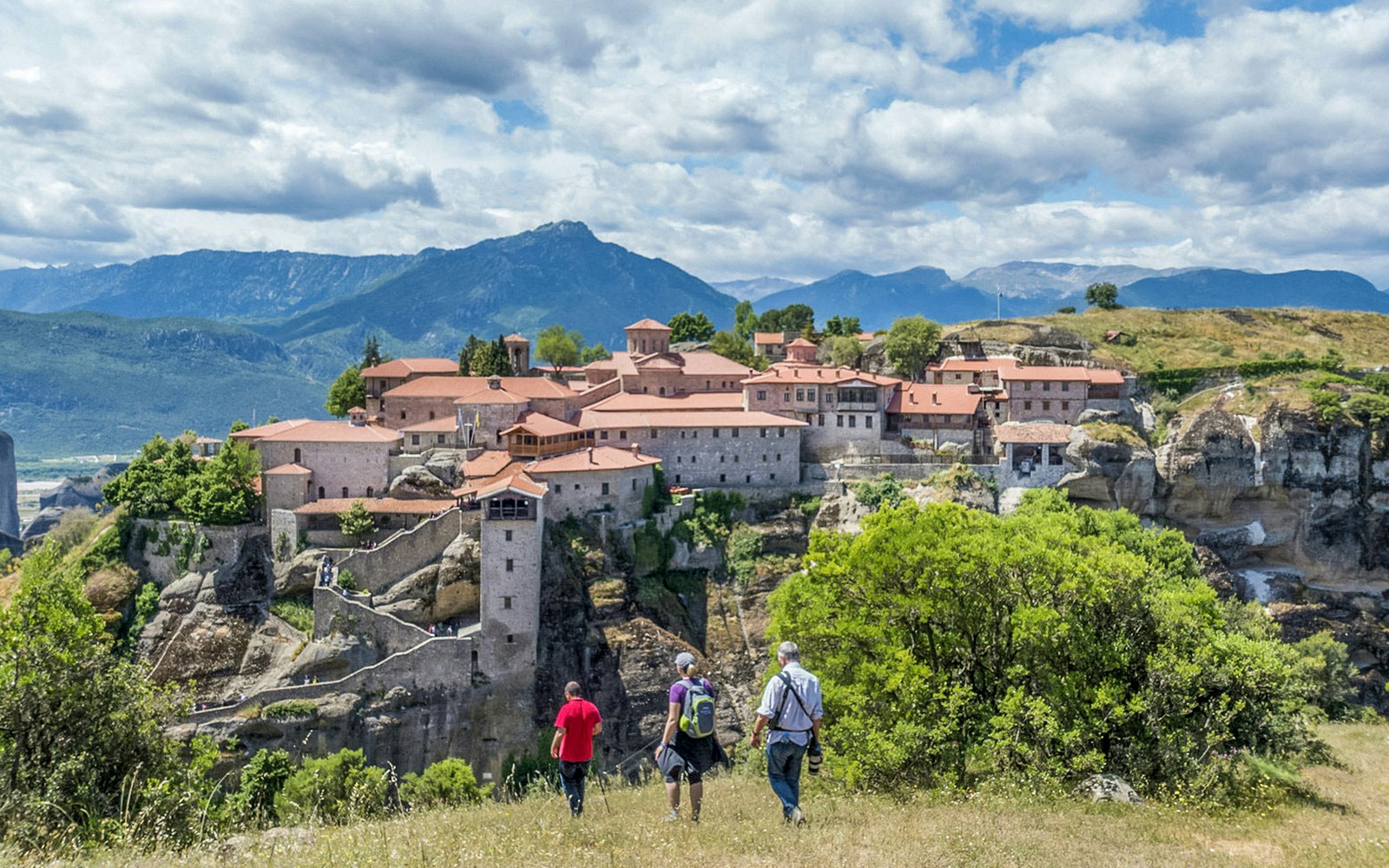

Founded in the 14th century by St. Athanasios, the Great Meteoron Monastery is the largest and oldest of Meteora’s six active monasteries. It once served as a refuge for hermit monks and a spiritual center during the Ottoman era, safeguarding manuscripts, relics, and treasures. Inside, you’ll find frescoes from the 1500s that vividly portray both paradise and martyrdom, considered some of the finest post-Byzantine art in Greece. Even today, its vast courtyards and preserved kitchen tell the story of a self-sufficient community high above the Thessalian plain.
Entry to the Great Meteoron Monastery is already included with all Meteora tours, subject to its opening schedule. There’s no need to purchase a separate pass, so you can simply enjoy this landmark as part of your journey through Meteora’s rock-top sanctuaries.
From the monastery’s elevated courtyards, you get some of the widest, unbroken views across the Thessalian plain, with Mount Olympus faintly visible on clear days. Stay until sunset and watch the cliffs blaze orange while the valley below sinks into shadow; it feels like a scene out of a film.
The tombs of St. Athanasios the Meteorite and his successor St. Ioasaph lie within the complex, turning the site into a place of pilgrimage as well as history. The fact that the two men who established Meteora’s monastic life are still interred here gives the site immense spiritual gravity.
The monastery contains a remarkably well-preserved medieval kitchen, complete with stone hearths, smoke-blackened chimneys, and centuries-old cooking utensils. This glimpse of monastic daily life is rare, since most monasteries lost such features during later renovations.
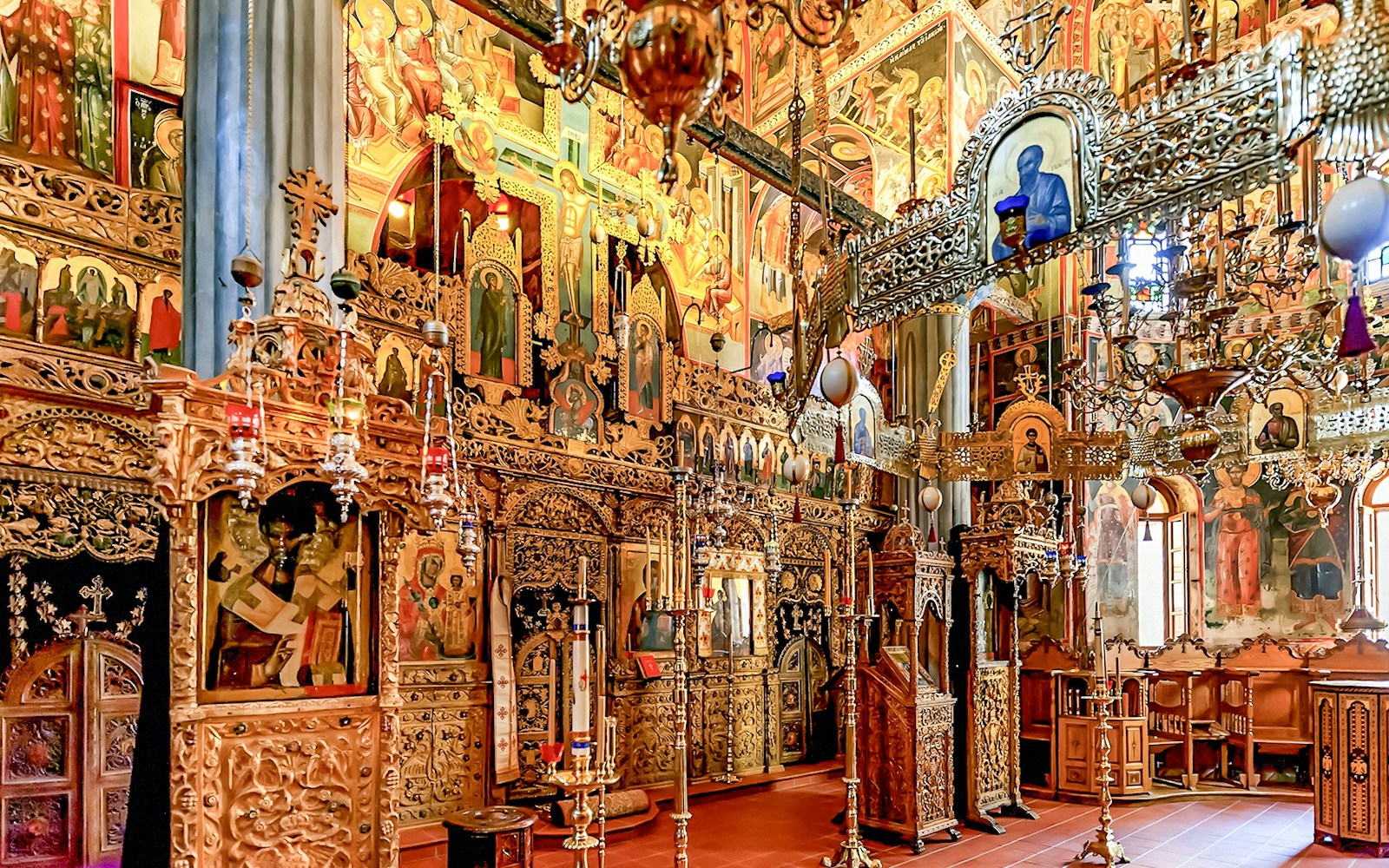
The main church, decorated with 16th-century frescoes showing vivid scenes of martyrdom, paradise, and judgment.
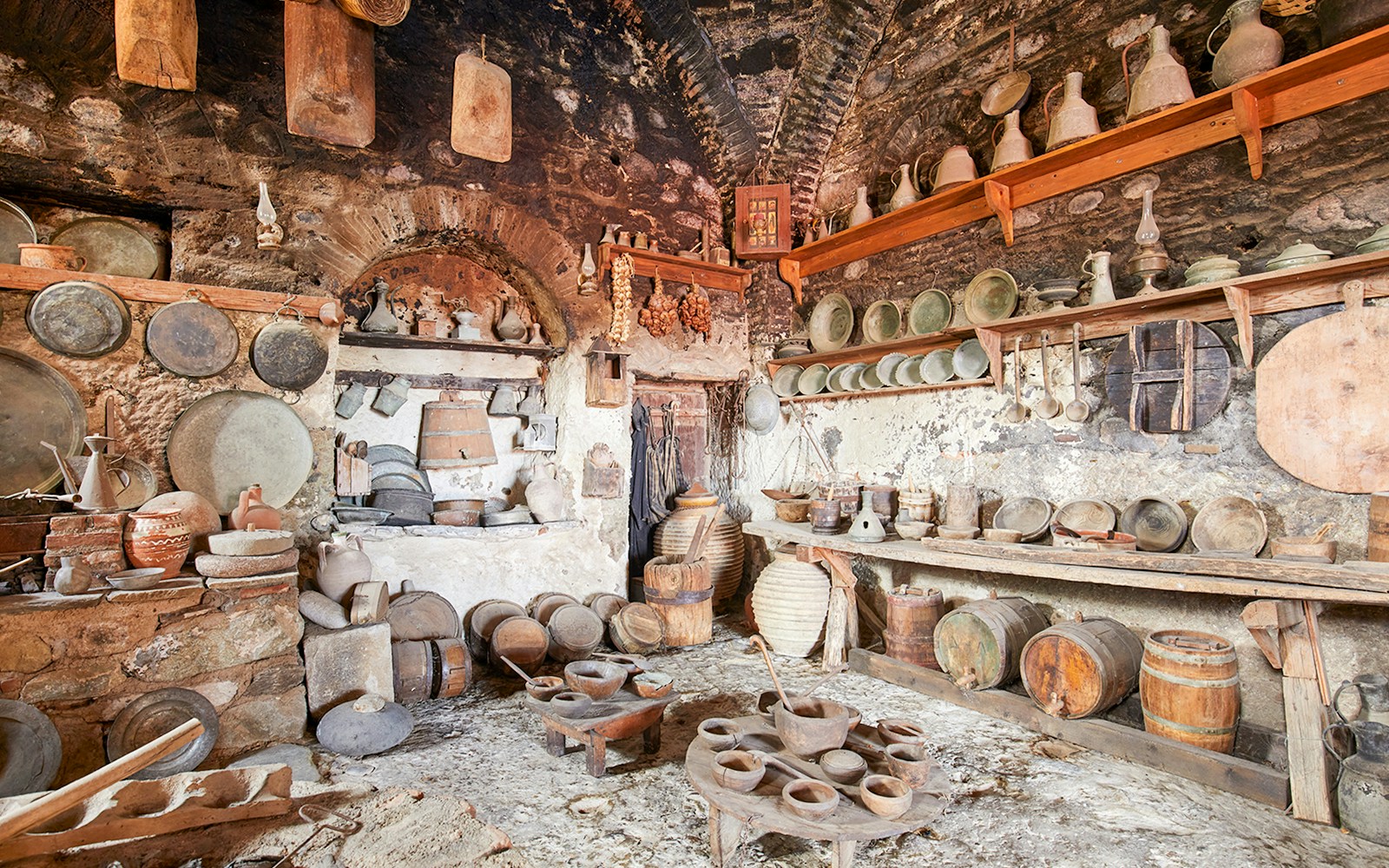
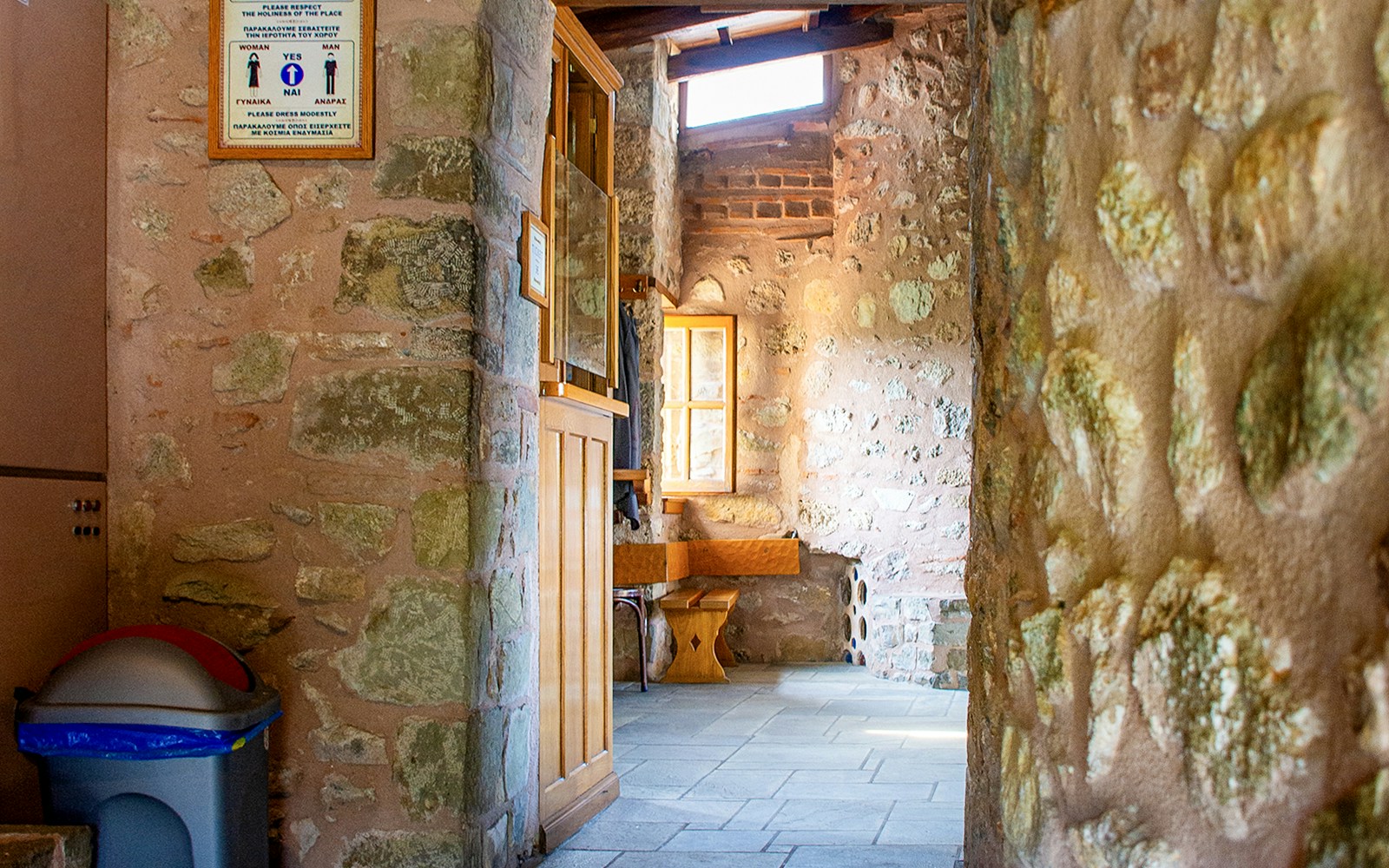
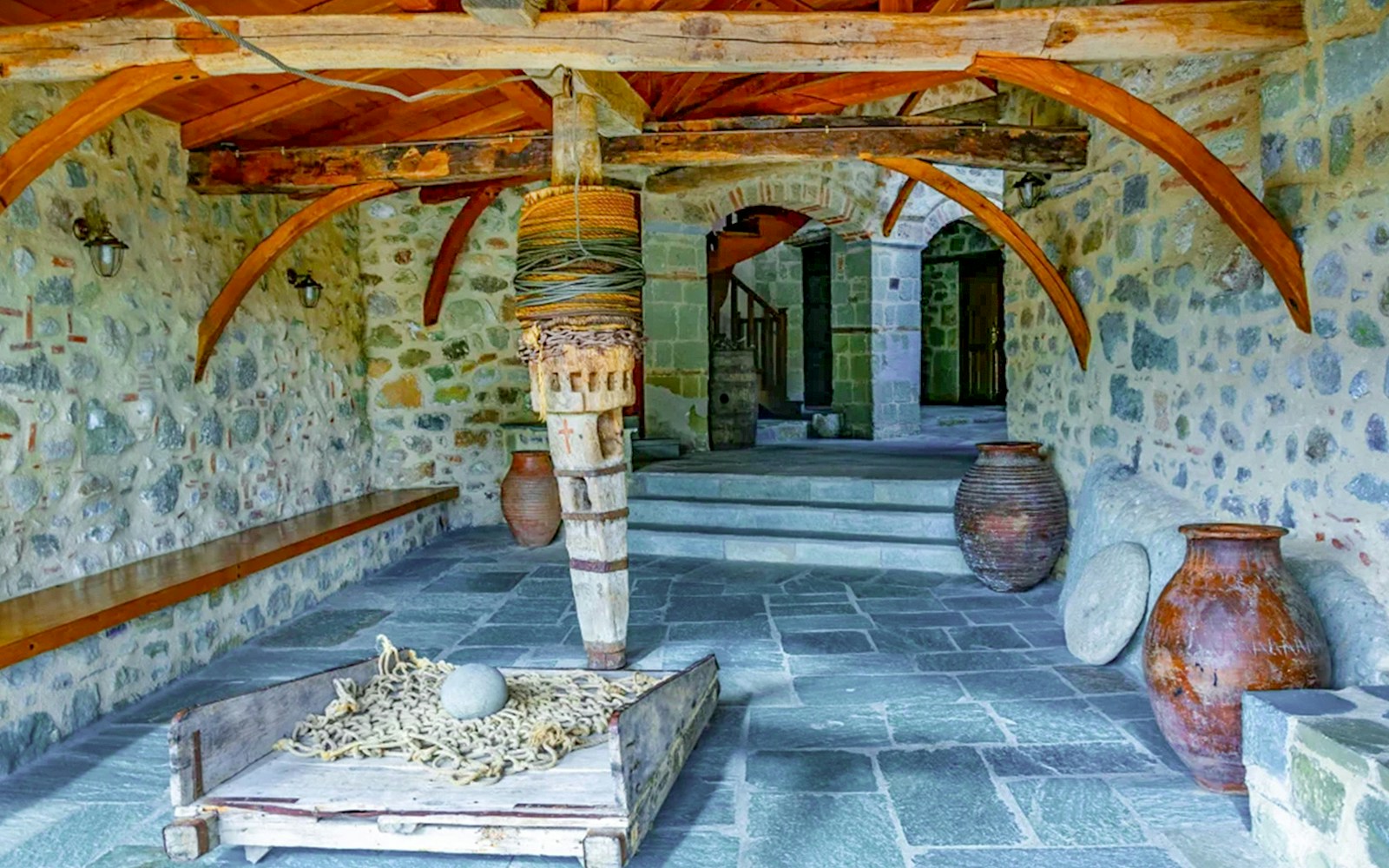
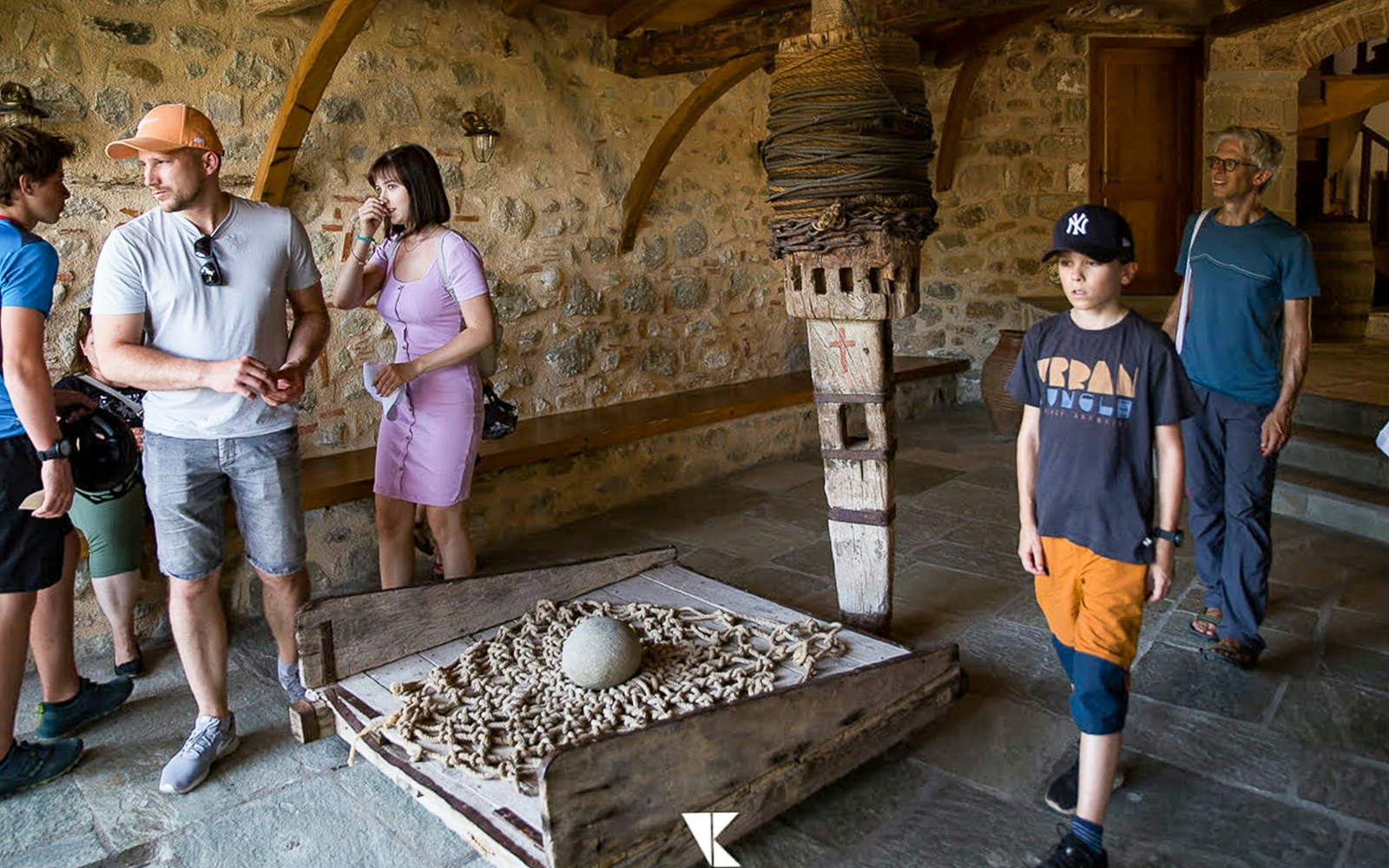
Yes, entry to the Great Meteoron Monastery is included in all Meteora day tours. Access is subject to availability, as opening hours or capacity may vary depending on the season and visitor numbers.
Plan to spend 1 to 2 hours exploring the monastery and its surroundings. With its chapels, museum, and historic kitchen, it typically takes longer to see than other Meteora monasteries.
The monastery is busiest late morning when tour groups arrive. For a calmer experience, aim to visit early in the morning (before 10am) or later in the afternoon.
Yes, all Meteora tours from Athens or Thessaloniki include an English or Spanish-speaking guide along with smart audio guides in multiple languages, inviting you to dive deeper into the monastery’s history, architecture, and religious traditions that you might otherwise miss.
Photography is allowed in outdoor areas and courtyards, which are especially scenic. However, photos are not permitted inside the churches or chapels to preserve their sacred atmosphere.
Unfortunately, the monastery is not easily accessible to visitors with mobility challenges. Reaching it requires climbing around 300 stone steps and navigating uneven paths.
A modest dress code is strictly enforced. Men must wear long trousers, while women must wear long skirts and cover their shoulders; wrap skirts and shawls are available at the entrance if needed.
Yes. Meteora is home to six active monasteries, and each offers its own unique atmosphere and views. The Great Meteoron pairs especially well with a visit to Varlaam Monastery, located directly opposite.
From Athens: Meteora Monasteries & Caves Full-Day Trip
From Athens: Meteora 2-Day Trip with 2 Guided Tours & Hotels
From Thessaloniki: Meteora Monasteries & Caves Full-Day Trip
From Meteora: Monasteries & Caves Morning or Sunset Guided Tour
From Athens: Meteora Monasteries & Caves Full-Day Trip with Lunch
From Meteora: Guided Hiking Tour with Monastery Visit